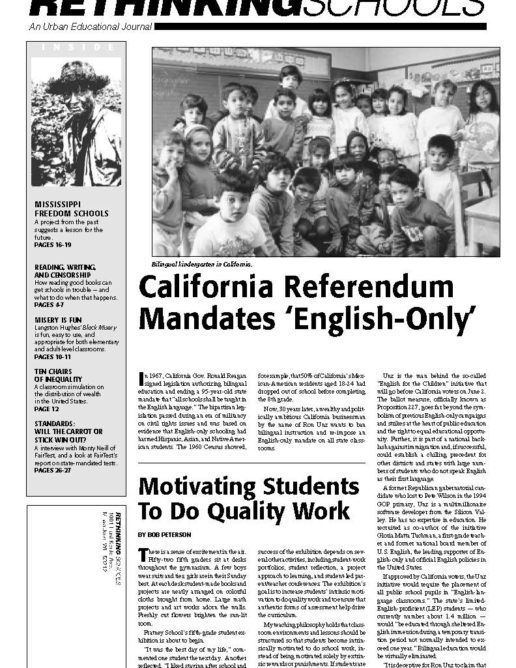Number of Language-Minority Students Skyrockets
Since 1980, the number of language-minority Americans has increased at more than four times the rate of overall population growth. Because these groups are, on average, younger than native English speakers, the number of language-minority children has increased even faster.
According to the 1990 Census, nearly one of every six school-aged youth regularly spoke a language other than English in their homes. In 1994-95, there were an estimated 3.2 million Limited English Proficient (LEP) students in U.S. elementary and secondary schools, nearly 7% of total enrollment. Some states have felt an even more dramatic impact. In California today, 36% of K-12 students speak a language other than English at home and 24% are LEP, a population that has more than doubled in 10 years.
Only a minority of LEP students are currently enrolled in full-fledged bilingual education programs taught by a certified teacher who speaks their native language. Reliable national figures are unfortunately lacking in this area. In California, one of the few states that gathers comprehensive language education statistics, fewer than 30% of LEP students are in classrooms where lessons are taught in their native language by certified teachers or teachers-in-training.
Bilingual education also serves a growing number of native English-speaking students, whose parents want “the bilingual advantage” for their children. By 1995, two-way bilingual programs were operating in at least 182 schools nationwide, in languages such as Spanish, Korean, Chinese, French, Arabic, Japanese, Russian, Portuguese, and Navajo.

